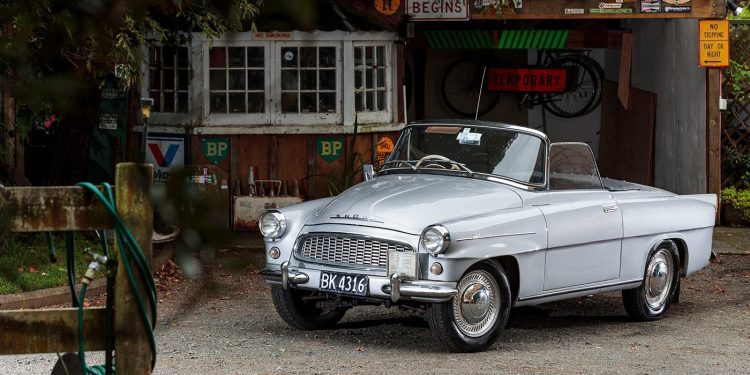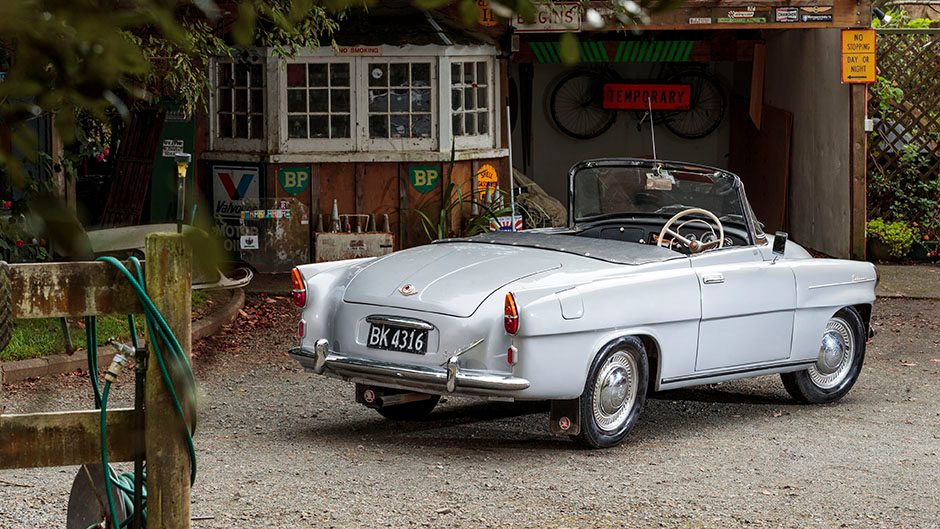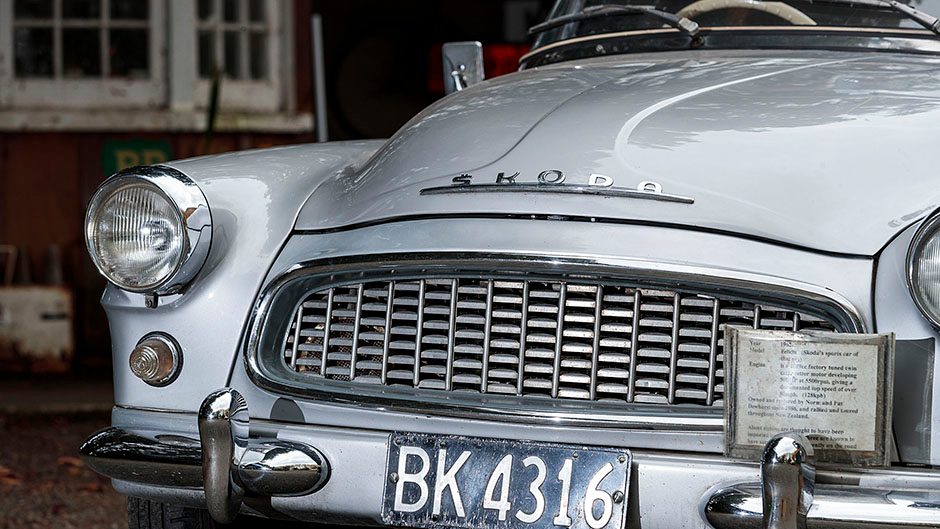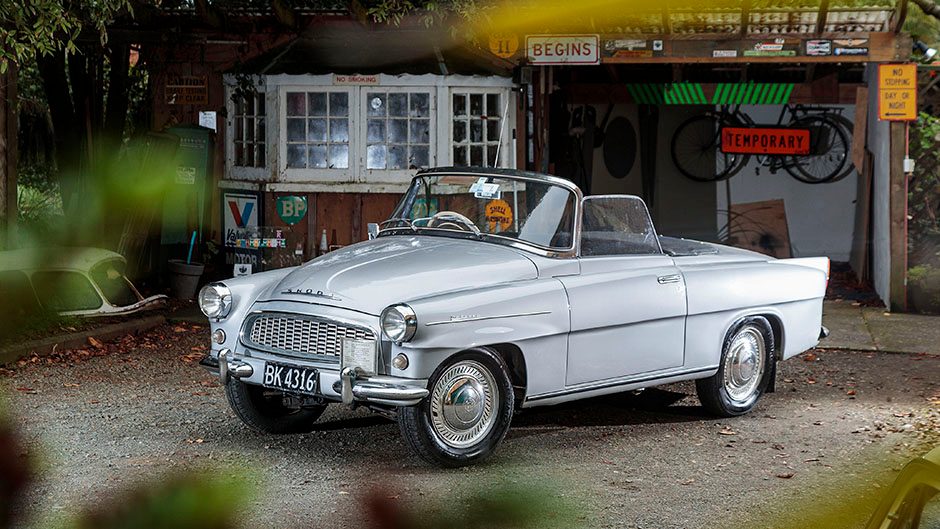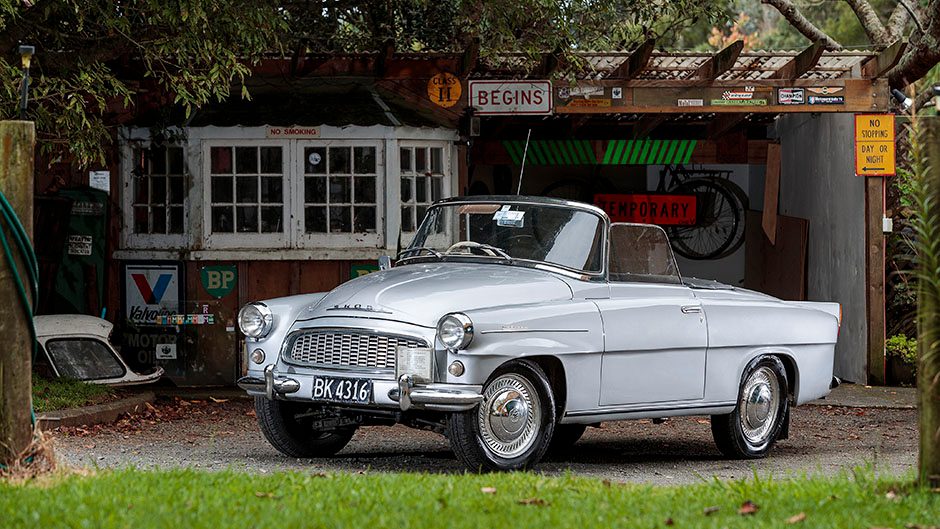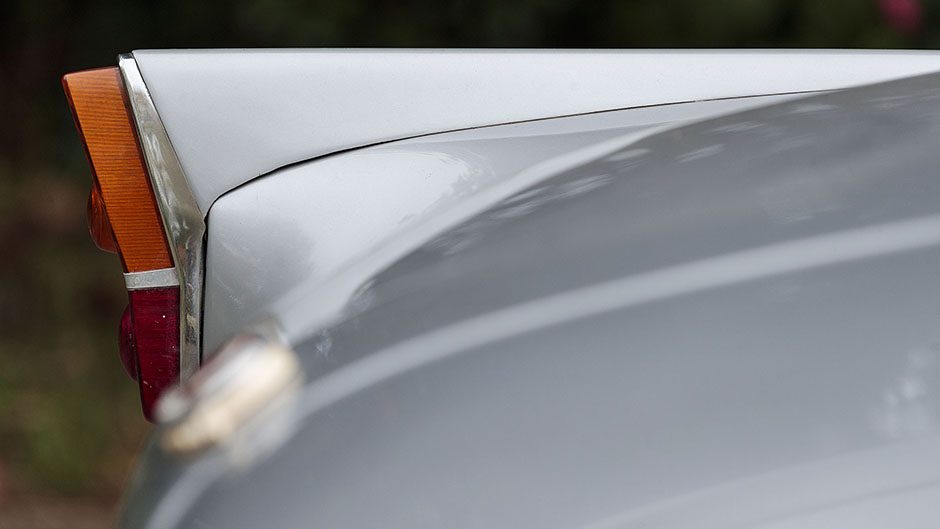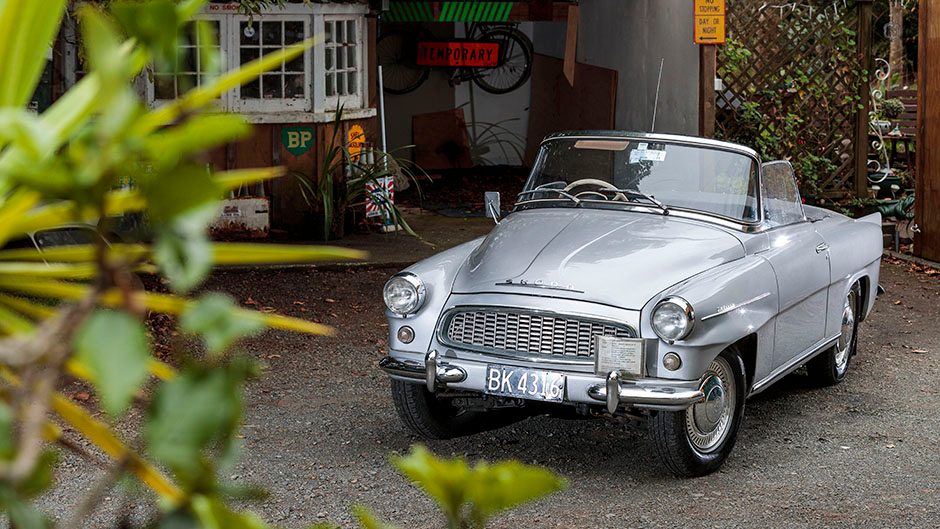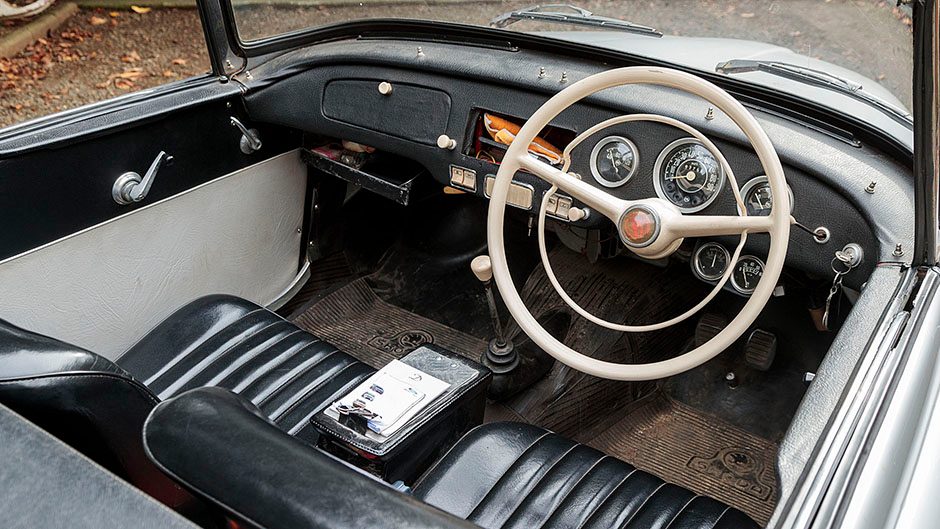1962 Skoda Felicia
Words Kyle Cassidy | Photos Tom Gasnier
One of Skoda’s cuter cars is the Felicia, the convertible stablemate of the firm’s mainstream Octavia. We track down one of these rarities in New Zealand.
They call the Skoda Felicia ‘probably the most popular Czech convertible ever’. That’s ‘probably’ an accurate statement, given we can’t think of many other droptops made in any great numbers emanating from the former Eastern bloc state. Whatever, the Skoda Felicia, a diminutive 2+2 droptop had its first outing at the Spring Fair in Leipzig on March 1, 1959. It debuted a few months after the firm’s new Octavia, a two-door hardtop, and the two shared much in common.
The Felicia was a follow-up to the 450 from 1957. Skoda only made 1000 or so of those converts before it rolled out the new Felicia. This featured a few new tricks such as coil springs for the front end, with torsion bar stabilisers replacing the old transversely mounted leaf springs. It used a central tube-type chassis and the all-metal body was mounted on rubber bushes to reduce cabin vibrations. To further improve ambience during bleak Eurasian winters, Skoda made optional a fibreglass hardtop.
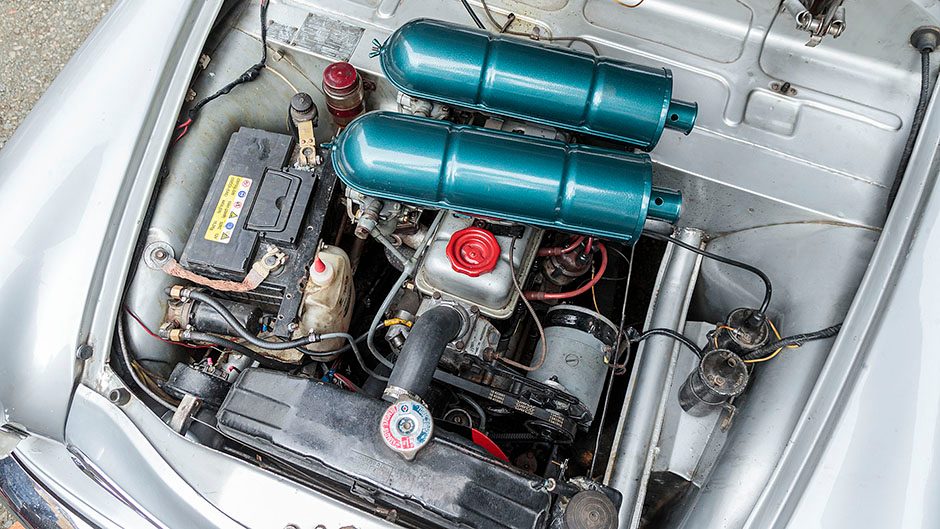
The Felicia weighed in around the 930kilo mark and was initially powered by a 1089cc four cylinder, shared with the Octavia. With an overhead valve design, it spat out 50hp at 5500rpm while 74Nm were tapped at 3500rpm. Top speed was a respectable 130km/h and it could average 9L/100km. It made 10 more horsepower than it did under the bonnet of the Octavia thanks to the adoption of twin carbs, a different camshaft and an improved head with honed combustion chambers.
In 1961, the Felicia was updated with a more distinctive grille and drop-shaped taillights, while fins were tacked on the rear flanks. Helping in the quest for spirited driving, the gear change mechanism for the four-speed box was relocated from the column to the floor.
The Felicia Super came about in 1962 and featured a larger 1221cc four cylinder with a pair of downdraught carbs to net 55hp and 82Nm. It also gained wider tyres to improve grip and could be wrung out to 135km/h.

The Felicia and Octavia would end their production run in 1964, Skoda making a total of 14,863 of the drop-tops at its Czech plant in Kvasiny, with two-thirds of those being for export markets. The passing of the Octavia and Felicia also marked the end of the line for Skodas with a longitudinal rear drive layout. At this time the manufacturer was preparing for the arrival of the rear-engined 1000 MB, the type of pre-VW-era Skodas with which you’re probably more familiar.
Our feature car here is a 1962 example of the Felicia owned by Norman and Pat Dewhurst. Norm, a former president and now life member of the Vintage Car Club of NZ, says his connection with Skoda dates a long way back thanks to his friendship with Dereck Winterbottom. Dereck worked for the original NZ distributor, Motor Holdings, and later bought the distribution rights in the 1980s.
Norm bought his Felicia late in that same decade and was attracted to it because it was a soft-top going cheaply, costing just $1500. But it then sat in the garage for the better part of ten years. He pondered whether he wanted to restore the Skoda, but his wife twisted his arm to get it back on the road.

The restoration was a big chore; it was in a pretty sad state, requiring a lot of work on the body and interior before getting a new paint job. Being a mechanic, he undertook the engine rebuild himself and the silver Felicia was back on the road in 2000.
Norm says he’s always been impressed with the handling of his Felicia which he says runs contrary to popular opinion. This states Skodas of the era were all afflicted by wayward dynamics, particularly concerning breakaway oversteer thanks to the prominent positive camber of the rear wheels. He admits it wasn’t the best on its original cross-ply tyres, but a set of more modern radials helped sort it. He also has a four gallon jerry can of water in the boot acting as ballast to get the De Dion rear end to sit level, helping negate some of the camber effect. He says the ride is quite firm, but it acquits itself well on poor road surfaces which were probably quite common in Czechoslovakia at the time.
Norm’s done more than 40,000 miles in it over the years. He and his wife have taken part in rallies and tours all over the country and this Felicia has been to the South Island on several occasions. Though it was on a South Island tour, one where it rained persistently, that the Dewhursts decided they needed a more watertight car for such adventures, and so they now take their Triumph Dolomite when the weather looks iffy.
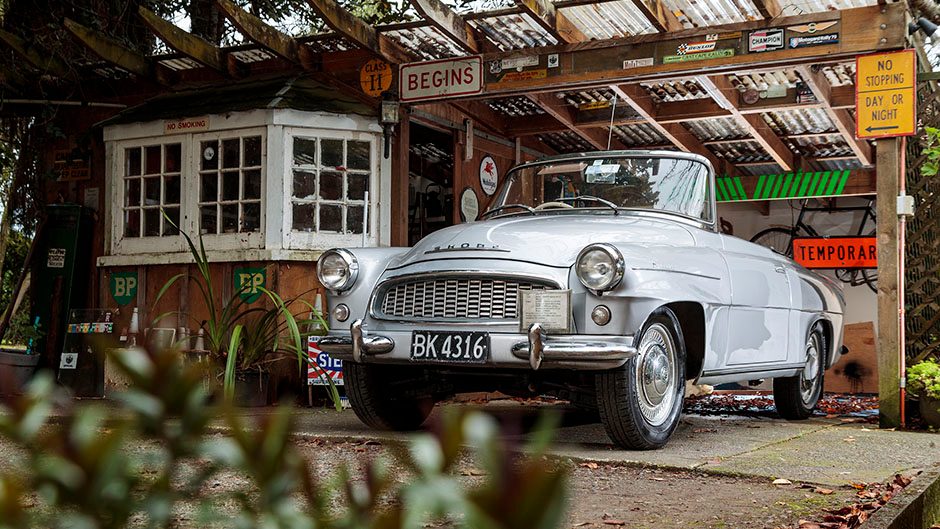
The Felicia was off the road for a period with a broken windscreen as a replacement proved hard to find. They tried to source a spare from Europe and even hunted around the US for one, as the car was sold there in the early sixties. While the western states were convertible mad at the time, the Felicia had limited appeal as it was the same price as the full size Yank tanks of the time which could be had with a V8 and more of the mod cons. The screen hunt proved unsuccessful however and Norm ended up buying another Felicia in order to obtain its windscreen, and a few other bits and pieces.
As with all old and rare cars, some parts are getting harder to find, though being mechanically similar to the Octavia and using the same panels up front make it easier as the hardtop and combi (a two-door wagon) were made in greater numbers.
The car was rear-ended a few years back, and Norm says the chassis ends at the rear axle, with everything aft being body work. And so it crumpled up pretty badly. It required genuine panelbeating to rectify, and Norm says he’s lucky a shop in South Auckland, which had the right skill sets, decided to take the challenge on. They succeeded and got the Felicia’s rearend looking good again.
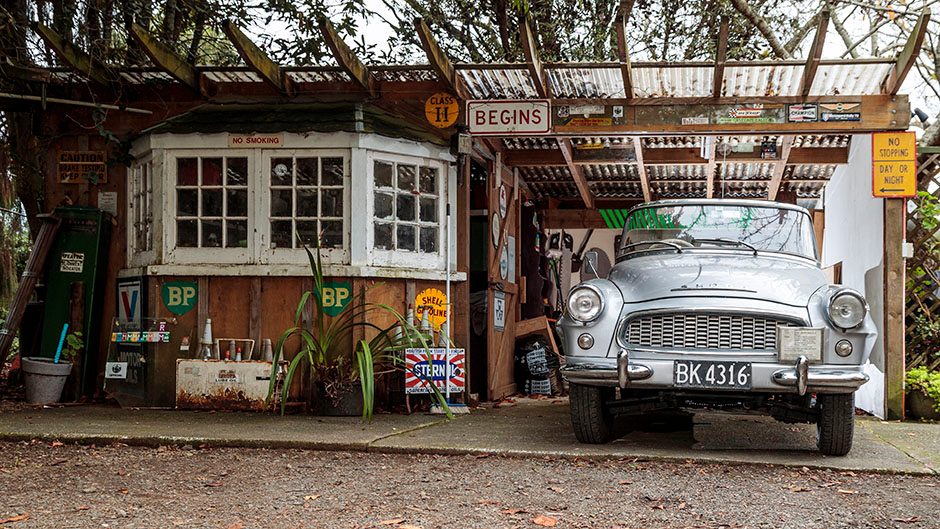
He says it’s fairly reliable for a car of its age, though the carbs are temperamental. The Jikov suckers are a Czech version of a Solex downdraught design. Norm says he has paid so-called specialists to rebuild them twice, but they keep giving trouble, and he hopes to get them sorted himself eventually.
About 20 Felicias were imported here new, however not by the official distributor of the day, but rather the Skoda agent in Palmerston North. Norm believes there are six left in the country, making this sixties soft-top something of a rarity.


